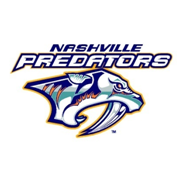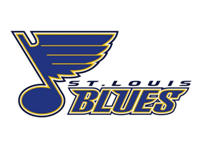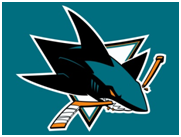EPAct Tax Aspects of the National Hockey League's Green Initiative
The National Hockey League (NHL), in partnership with the Natural Resources Defense Council (NRDC), has implemented a program aimed at fostering sustainable living and business practices for ice rinks. Since its launching, in 2010, NHL Green has been at the forefront of the movement for sports sustainability. The comprehensive initiative encompasses efforts in different domains, such as waste management, environment preservation, and energy efficiency. Notable examples are the award-winning food recovery program, NHL Rock & Wrap It Up! and the water restoration program, Gallons for Goals.
In recent years, the relationship between sports and sustainability has gained ever increasing attention. The National Basketball Association (NBA)’s Green Initiative1 and the Major League Baseball (MLB)’s Greening Program2 are other examples of this growing awareness.
Intrinsically linked to the cold weather, hockey traces its origins to frozen ponds. For years, burgeoning NHL stars have learned to skate and play in these natural winter settings. By implementing energy efficiency projects, NHL Arenas can greatly contribute to the League’s sustainability goals and to the ultimate objective of perpetuating this tradition. Privately owned arenas and designers of public ones can take advantage of energy tax savings that significantly improve the economic payback of such measures.
The EPAct Tax Opportunity
Pursuant to Code Sec. 179D, as enacted by the Energy Policy Act of 2005 (EPAct)3, properties that make qualifying energy-reducing investments in new or existing locations can obtain immediate tax deductions of up to $1.80 per square foot.
If the building project does not qualify for the maximum EPAct $1.80 per square foot immediate tax deduction, there are tax deductions of up to $0.60 per square foot for each of the three major building subsystems - lighting; heating, ventilating and air conditioning (HVAC); and building envelope. The building envelope comprises every item on the building's exterior perimeter that touches the outside world including roof, walls, insulation, doors, windows and foundation.
EPAct tax savings are driven by square footage. As a result, big structures such as NHL arenas have enormous potential for deductions. Exhibit 1 illustrates benefits available for U.S. arenas and training facilities.
Potential EPAct 179D Tax Deductions for Energy Efficient Building Improvements - National Hockey League
* LEED Gold
** Google Earth Estimates
Energy Efficient Lighting
As most sports facilities, NHL's arenas consume an immense amount of electricity for interior building lighting. In this scenario, replacing inefficient lighting is not only a major opportunity for energy savings, but also a strategy for cutting operating costs. In addition, qualifying interior stadium lighting projects are eligible for up to a $0.60-per-square-foot immediate EPAct tax deduction. Adjacent parking garages are also strong candidates for such deductions.
LED lighting stands out as a promising solution for hockey arenas. This new technology is significantly more efficient and has a much longer lifespan than traditional ones. Contrary to metal halide fixtures, which need to be heated to emit life, LEDs light up instantly. If the Mercedes-Benz Superdome were equipped with LED lighting; the nation would not have had to wait for 30 minutes for the 2013 Super Bowl to resume after a power outage.
With the objective of fostering sustainable operating practices and procedures in the Bridgestone Arena, NHL’s Nashville Predators have recently conducted energy audits that lead to the establishment of concrete efficiency goals. The planned improvements to the lighting system will utilize daylight-harvesting next to glass curtain walls. According to the senior director of operations for the arena, Terry McConnell4, the process will allow for the better use of daylight throughout the facility. To further reduce energy consumption, inefficient bulbs will be replaced with energy-saving ones; bi-level lighting controls and energy-efficient lamps will be used in the place of metal-halide sources. EPAct tax savings are available to assist the Predators’ efficient lighting projects.
Energy Efficient HVAC (Heating, Ventilation, and Air Conditioning)
Ice Hockey arenas have very particular interiors. In these locations, HVAC systems must be able to keep the ice in good condition, avoid fog formation, prevent excess moisture, and ensure spectators safety and comfort. Therefore, and particularly during peak summer months when temporary dehumidification is necessary, HVAC generates huge energy consumption. Arenas can use highly efficient special purpose HVAC solutions, such as energy recovery ventilation, geothermal, and thermal storage, to greatly reduce energy usage and potentially qualify for a large EPAct HVAC tax deduction.
With the objective of attaining greater HVAC efficiency standards throughout the League, the NHL has made Johnson Controls’ York HVAC division a global leader in sustainable solutions, the official HVAC partner for the 2012-2013 season5. NHL arenas investing in highly efficient HVAC systems generally qualify for the $1.80-per-square-foot tax deduction presented above. Those that already have such systems should be positioned to obtain the maximum EPAct deduction when making further energy reducing projects.
Energy Efficient Building Envelope
Unlike lighting and HVAC, the building envelope does not actually consume energy so the $0.60-per-square-foot Section 179(D) building envelope energy tax deductions will be predicated by achieving energy efficient lighting and, in particular, HVAC energy efficiency targets.
Arenas that have undergone or are currently implementing highly energy efficient measures, will be positioned to simultaneously achieve large tax deductions for investments made in qualifying building envelope items, such as roofs, walls, doors, windows, foundation and insulation.
Sustainable Slapshots
NHL Green has inspired several sustainable initiatives throughout the League, particularly with regards to energy efficient facilities. The following table presents a few examples of these “sustainable slapshots”6:
Conclusion
Rising sustainability standards for NHL arenas have come to stay. "We need to make our buildings as efficient as the athletes that use them," said the former New York Rangers goaltender and Stanley Cup champion Mike Richter, now a principal at Healthy Planet Partners7. To this end, the League has established a metrics tracking system, designed to capture and analyze a facility’s energy, water, and waste consumption. EPAct tax deductions are available to assist the quest for high performance NHL arenas.
1 - Charles Goulding, Jacob Goldman and Taylor Goulding, National Basketball Association (NBA) and Energy Tax Savings, CORP. Bus. TAX'N MONTHLY, October 2009, at 11.
2 - Charles Goulding, Raymond Kumar and Kenneth Wood, The Tax Aspects of Major League Baseball’s Green Team Initiative, CORP. Bus. TAX'N MONTHLY, August 2009, at 13.
3 - Energy Policy Act of 2005 (P.L. 109-58).
4 - NHL Green Slapshots, Predators attack water and energy usage, Oct. 25, 2012. http://www.nhl.com/ice/blogpost.htm?id=11748
5 - NHL Green Press Release, York becomes official HVAC partner of the NHL, June 06, 2012. http://www.nhl.com/ice/news.htm?id=635240
6 - For more information, see NHL Green’s Blog http://www.nhl.com/ice/blog.htm?id=1125
7 - NHL Green Press Release, Richter addresses Sports and Sustainability conference at the White House, July 23, 2012. http://www.nhl.com/ice/news.htm?id=638423





